A diptych or triptych, derived from the Greek ptykhos meaning to bend, is a work of art composed of panels (2 or 3 respectively). Although the panels may form a single scene, sometimes they are separate parts linked by visual coherence.
In the Middle Ages, the triptych was used to tell stories. Consisting of a large central panel and two smaller ones painted inside like folding doors, the three panels are a reflection of the three persons of the Christian Holy Trinity. The panels were fitted with hinges so that they could be closed and the artwork protected.
The artists used the triptych to tell a story at different points in time, to show the development of a subject, or to show multiple points of view. Painted or sculpted, the triptych has been the first choice for religious painting for many centuries.
The diptych and triptych are found often later in classical and modern art. We are inviting you to discover a selection of significant diptychs and triptychs throughout the art history.
The Wilton Diptych, 1395-1399
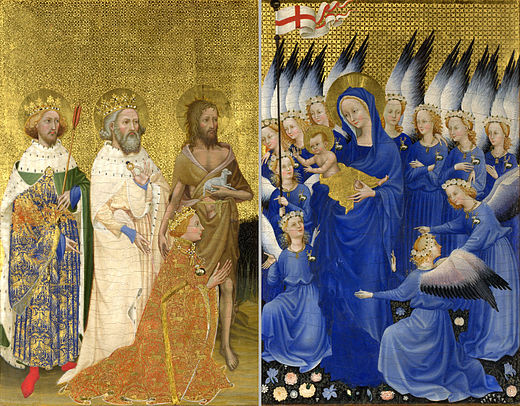
The Diptych was commissioned by King Richard II. It depicts on one side a kneeling Richard II. The other shows the Virgin Mary and baby Jesus surrounded by 11 angels, to whom Richard II either prays or gives a gift. When closed, the panel on the right depicts a white stag, the symbol of Richard II.
Being closed, the panel on the right depicts a white stag, the symbol of Richard II. On the left is a shield emblazoned with the coat of arms adopted by Richard II in 1395.
Piero della Francesca, Diptych of Federico da Montefeltro and Battista Sforza, 1465-1466
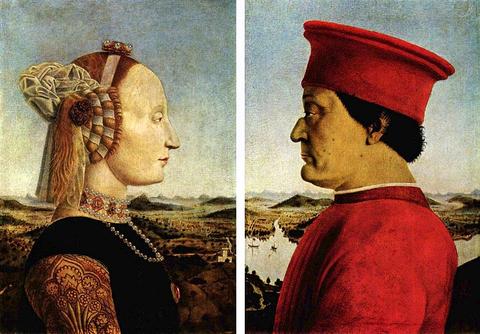
It depicts the portraits of the Duke of Urbino and his wife Battista Sforza. Usually in the paintings the husband is depicted on the left, and here Battista is on the left. No doubt this is a tribute to his wife, but perhaps also to hide the disfigurement of the duke’s other side. The latter was actually painted during his lifetime, however the Duchess was already dead, which may explain the pallor of her face.
Jérôme Bosch, The Garden of Earthly Delights, 1494-1505
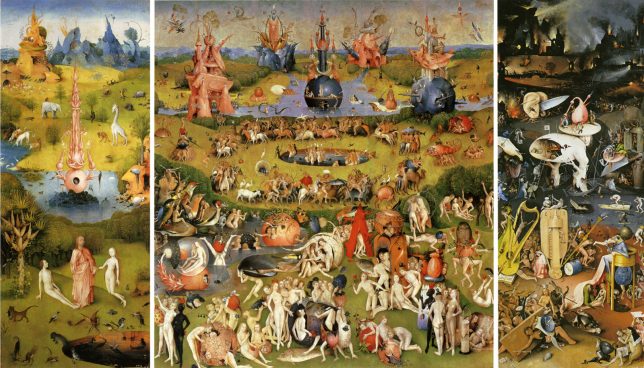
The triptych oil painting was painted on wood by the Dutch Jérôme Bosch. The closed triptych depicts a transparent sphere, seething with life, a symbol of the creation of the world. Inside, the panel on the left represents Adam and Eve. The central panel is an unusual but delightful garden where the children of Adam and Eve, humanity, indulge in the pleasures of the flesh, lust and sin. The right panel shows the torments of hell. The triptych is a kind of warning against vice and disrespect for the principles of religion.
Paul Gauguin, The Sculptor Aubé and His Son, Emile, 1882
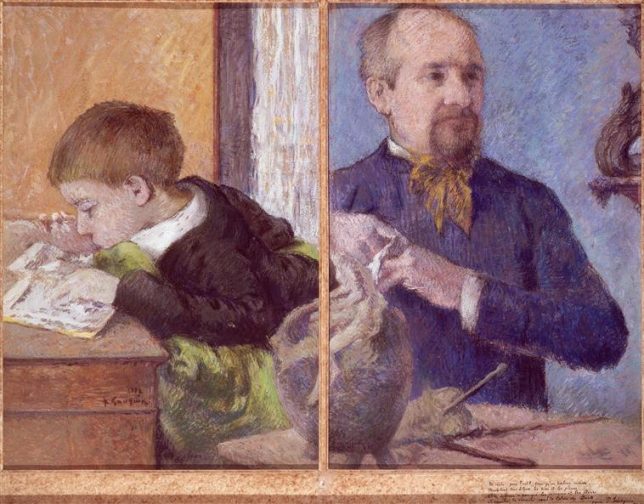
This diptych’s colors are not vibrant and the subjects are not exotic. On the right, Jean-Paul is in the process of making a vase in his workshop. He looks in the opposite direction at his son, who is looking at pictures. Father and son confront each other and do not seem to be in close proximity to each other.
Andy Warhol, Marilyn Diptych, 1962
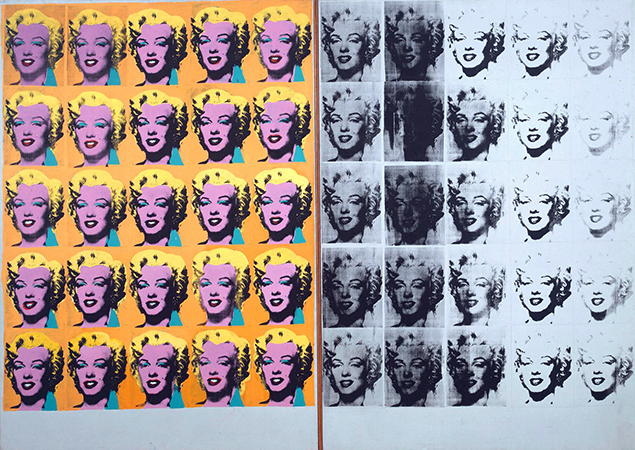
Andy Warhol made more than twenty silkscreens of Marilyn Monroe n the 4 months following her death. The famous Marilyn diptych features two silkscreens of Marilyn, one in pink and the other in black and white. The contrast of bright colors against black and white and the fading effect in the right panel suggest the star’s mortality. It is one of the notable examples of diptych in contemporary art.
Mark Rothko, Chapel Rothko, 1964
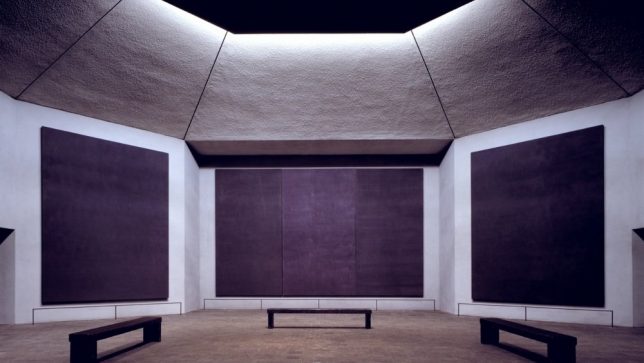
In 1964, Rothko built a dedicated meditation space commissioned by art collector couple John and Dominique de Menil. Although it is called the Rothko Chapel, it is actually an octagonal building open to all faiths. There is no saint’s name here, no cross, only a huge hall of modern art, decorated with 5 simple panels and three diptychs by Rothko.
Francis Bacon, Three Studies of Lucien Freud, 1969
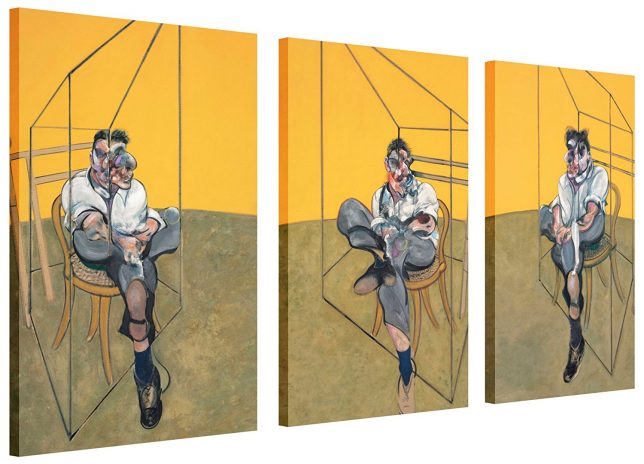
Francis Bacon was considered the ultimate triptych painter. One of these triptychs was painted in 1969 of his friend and at the same time rival “3 Studies by Lucian Freud”. In the mid-70s, 3 panels were sold separately. Frustrated that the panels were separated, Bacon wrote in a photograph of the left panel that it “would only make sense if it was with two other panels”.
Ai Wei Wei, Dropping a Han Dynasty Urn, 1995
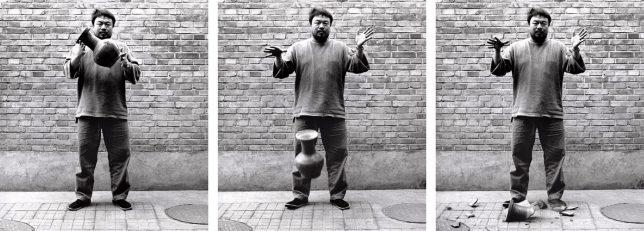
The triptych through photography done by Ai Wei Wei immortalizes the artist as he drops a 2,000-year-old ceremonial urn on the ground, which explodes at his feet in pieces. This object had not only significant monetary, but also symbolic and cultural value. The Han Dynasty is considered a defining period in the history of Chinese civilization. The deliberate destruction of the cult form of this period is tantamount to throwing away the entire cultural heritage of China.
























